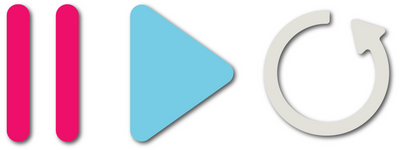Music Theory 101
In a piece of music (any song), the way chords are placed one after the other, is called a chord progression.
The chords in a progression have different harmonic functions (they feel different). Some chords provide the Stability, some the Departure, and some provide the dynamic Tension.
There are certain patterns as well as certain pairs of chords that do not sound especially good together. Regardless, there exist thousands of different ways to combine a limited number of chords.
It´s all about building tension and releasing it. It happens every time in every song; you just have to listen carefully and you will start noticing it.
There are many songs that share the same chord progressions and, in some cases, even the tempo. And the reason is quite simple:
- Pop songs often use simple chord progressions, so that they’re easy to memorize (often only 2 to 4 chords total).
- They try to make a song sound instantly familiar by “re-using” chord progressions that they know that works.
- The tempo stays in a very narrow range depending on the kind of song (music for dancing in the club typically lies around 110–128bpm).
Often a lot of work goes into making the song simple yet distinct by arranging or sound design.
You also can have the same chord progression as many known songs do, but with a different melody, for example, you will end up having a whole different song.
We use Roman numbers to change the tonality and have the same progressions going on in a different key.
For example, I have a simple progression like this one:
C | F | G ||
In the C major tonality with roman numerals, it would be like this
I ( C ) | iv ( F ) | V ( G ) ||
And in A Major would be like this:
I ( A ) | iv ( D ) | V ( E ) ||
Every song is in a specific key, a tonal center that all of the other chords revolve around.
That song could be in the key of C Major for example.
To play the key of C Major you just need to use all the white keys on a keyboard, it has no alterations (no sharp or flat notes). Each one of those seven notes (in the same octave) form what we call the Diatonic Scale.
We can give each one of these notes a number (or a degree). You will often see these scale degrees represented by Roman numerals in written materials.
Here is a handy chart where you can find each Major tonality with all the notes and alterations of each scale, all the Degrees (Roman numerals) with each type of chord they belong to:

Since diatonic chords fit naturally in a key, they will naturally sound good together.
Think about this: If you’d like to write a chord progression in the key of A Major, wouldn’t it make sense to know what chords naturally fit, or belong in that key?
Of course, it would.
Every major and minor key will have seven diatonic triads.
In other words, every major/minor key has seven chords that naturally occur in that key and sound good together.
There is kind of a formula, if you may say, to determine these chords.
For major keys, it’s as follows:

Minor keys also have the formula to determine their diatonic chords. It`s a bit different but in other order, and it has the same type of chords. It’s as follows:

The numbers refer to each note’s position in the scale. In the key of C, C is the 1st note, D is the 2nd note, E is the 3rd note, and so on.
This means the 1st chord in a major key is major, the 2nd chord is minor, the 3rd chord is minor, and so on.
This will come to you easily if you just try to learn it by memorizing them!
Or also try to play as many songs as you can, that will help you remember which chords sound good with each other.
